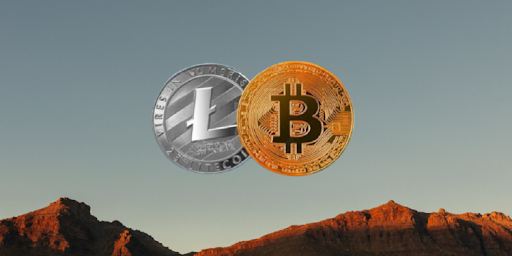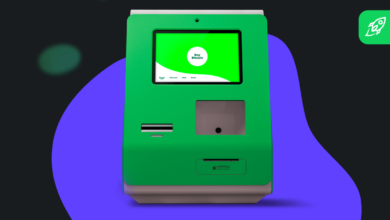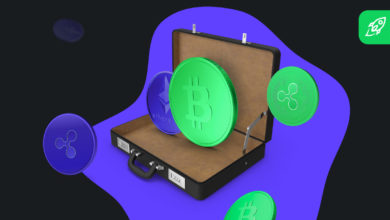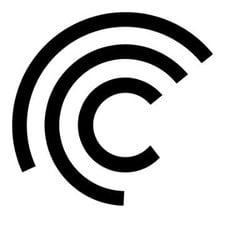Litecoin vs. Bitcoin

Over the past few years, public interest in cryptocurrencies has increased drastically. The main focus of this interest was Bitcoin (BTC), which became the world’s first digital currency and opened the era of crypto assets correspondingly.
Since then, however, a great variety of cryptocurrencies, which, as well as Bitcoin, have the blockchain technology basis, have appeared. Among these altcoins and tokens, currently presented on the crypto market, significant attention of the crypto enthusiasts garnered by one of first Bitcoin’s hard forks – Litecoin (LTC), which is sometimes believed to be a competitor to the ‘digital gold’.
In this article we consider in detail what BTC and LTC have in common and what the cryptocurrencies core differences are.
Similarities Between Bitcoin and Litecoin
Since its release in 2009, Bitcoin has gained huge popularity among users all over the world, and it is currently known as ‘digital gold’. While Bitcoin remains the top valued player in the cryptocurrency space, Litecoin makes everything possible to catch up with its ‘elder brother’.
LTC creator – Google engineer Charlie Lee. He was working at Google for almost a decade and even participated in the development of the Chrome browser. He wrote the code of the Litecoin cryptocurrency in his spare time and first published it on the Bitcoin forum in October 2011.
Initially, Charlie Lee did not set a task to compete with Bitcoin. On the contrary, he even said that LTC was created to become silver to Bitcoin’s gold, meaning that the Litecoin blockchain network is a simpler and more convenient alternative for everyday transactions.
Bitcoin, as a first cryptocurrency, is the central object of the crypto community today. Litecoin has attracted those who are not satisfied with some aspects of the ‘digital gold’, but who believe in a bright future of crypto.
The essence and purpose of Litecoin are similar to the tasks that its elder brother was originally designed to solve. It should serve as a means of payment, more convenient, faster and cheaper than fiat currencies.
At first glance, Bitcoin and Litecoin have a lot in common: they are both decentralized cryptocurrencies and aimed at peer-to-peer transactions. They don’t rely on the backing of central banks for value; much like any cryptos, their value is from the integrity of the network itself.
Both Bitcoin and Litecoin networks carry out transactions using their native network tokens: BTC token for Bitcoin network and LTC token for Litecoin network. As cryptocurrencies, they have created the same community and rely on similar cryptographic principles.
Protocol
A feature common for Bitcoin and Litecoin networks is the issue on the principle of PoW (Proof-of-Work). Some users of the network (miners) provide their computing power to ensure its operation. For this, they receive mining rewards. Litecoin miners use immense computing power to solve complex mathematical problems and earn the right to verify transactions, which adds new blocks to the blockchain.
Top Litecoin Mining Hardware
Bitcoin and Litecoin have another specific feature — group mining. Litecoin mining is exactly the same as Bitcoin’s. So, the process that allows the two currencies to be mined is similar. As a rule, miners are united in pools, which makes the process cheaper and more efficient in every sense.
How to Build Bitcoin Mining Rig?
The more miners there are, the more reliably the network is protected from attacks, but the electricity consumption in this case is quite large, and the efficiency of payments does not change. So, for security reasons alone, the network consumes much more electricity than it needs to conduct transactions.
Storage and Transactions
In addition to the common features, BTC and LTC digital coins can be obtained not only via mining, but both digital assets can be bought at online cryptocurrency exchangers. If you don’t have a cryptocurrency yet, then the easiest and most reliable way to buy LTC – a trusted online cryptocurrency exchange, such as Changelly. Here you can easily buy Litecoin and Bitcoin, and more than 200+ other digital assets with your Visa or Mastercard just with several clicks and without any struggles.
Since you have got some crypto coins you should think about a secure place where you can keep your digital money. Both Litecoin and Bitcoin are recommended to be held in a crypto hardware wallet for secure storage.
Differences Between Bitcoin and Litecoin
Market Capitalization
One of the aspects in which BTC and digital silver differ significantly is their market capitalization.
At the time of writing the total value of all BTC coins in circulation is $841 billion, making its market cap 74 times larger than Litecoin’s, which has a total value of $11.7B. Currently, the digital silver ranks 15th by market capitalization.
Read also: Bitcoin Price Prediction for 2022 and Beyond
Whether Bitcoin’s market cap strikes you as either high or low depends largely on a historical perspective. When we consider that Bitcoin’s market capitalization was barely $42,000 in July 2010, its current figure seems staggering.
Bitcoin, as a network, still dwarfs all other digital currencies. Thus, the fact that Bitcoin enjoys a significantly higher value than Litecoin is in itself not a surprise, given that Bitcoin is so much larger than all other digital currencies in existence at this time.
Read also: Litecoin Price Prediction for 2022 and Beyond
Distribution
One of the main differences between Bitcoin and Litecoin concerns the total number of coins that each cryptocurrency can produce. BTC blockchain network offers its users a maximum of 21 million BTC, and Litecoin – 84 million LTC. The number of coins in the Litecoin system is four times more, as well as the speed of blocks’ generation. Even though this may appear like a significant advantage for the cryptocurrency, in the real-world scenario, it is proven to be negligible. This is so because Bitcoin and Litecoin are divisible into nearly infinitesimal amounts.
the last Litecoin will be created around 2142; by the way, the issue of BTC should be completed by 2140.
So far, about 66.7 million LTC has been mined, but since the rate of coin issuance is decreasing due to halvings, the last Litecoin will be created around 2142; by the way, the issue of BTC should be completed by 2140. At the same time, miners will continue to receive commissions for confirming transactions — if, of course, there will still be the Litecoin cryptocurrency by that time, because 120 years is quite a long time.
Litecoin vs. Bitcoin Transaction Speed
One of the significant trumps of a LTC is the speed of transactions. Transactions are carried out 4 times faster due to the reduced block generation time. A payment operation can get into the Litecoin blockchain after 2.5 minutes. Bitcoins reach the receiver (in the best case) 10 minutes after sending.
The higher the speed – the lower the transaction queue. The faster the network processes payments, the fewer transactions are waiting for their miners.
Transaction Fees
An additional argument in favor of LTC is that the transaction cost is lower than that of Bitcoin by several times. At its peak, in December 2017, the average fee in the Bitcoin network reached $52, and the cost of transferring Litecoin did not exceed $1.4. But even now this difference is almost three times lower. Fast transfers combined with minimal transaction fees make Litecoin suitable for microtransactions and payments at points of sale.
A plus can be attributed to the relatively low price of the currency compared to the main coin of the crypto world. This means that the threshold for entering the cryptocurrency market for a Litecoin buyer is much lower than for a potential investor who wants to buy Bitcoin.
Hashing Algorithm
A fairly important difference in comparison of Bitcoin vs Litecoin is the mining algorithms that each of them uses to generate the block, as well as the number of coins distributed each time a solution is found.
Bitcoin uses the SHA-256 algorithm, and its younger brother uses the Scrypt algorithm, which determines the process of mining new coins. Miners confirm the transactions of other network participants and in return receive a reward in the selected currency.
Many people believe that Bitcoin’s SHA-256 is a more complex algorithm than Litecoin’s Scrypt, which, therefore, provides a higher degree of parallel processing. Bitcoin miners have developed sophisticated methods for mining coins with high efficiency.

The most effective method involves the use of ASIC – Application-Specific Integrated Circuits (Special-purpose Integrated Circuit). ASICs are, in fact, hardware systems (similar to processors) created exclusively for Bitcoin mining, which is characterized by huge competition since the number of people who want to get a profit from it is off the scale.
Litecoin, which is also known as silver to Bitcoin’s gold, was created mainly for those people who no longer had the opportunity to provide an immense amount of computing power to mine Bitcoin because their processors could not compete with ASIC.
Scrypt is more suitable for beginners. It was designed to be less convenient for custom hardware solutions, such as intelligent data processing based on ASICs. Scrypt, however, is not immune to innovation, and new developments are increasingly appearing that prevent easy access.
Litecoin vs. Bitcoin FAQs
What is Litecoin used for?
It can be used by a person and institution to buy goods and transfer funds between accounts. Relative speed and lower price of Litecoin transactions make it ideal for small everyday transactions. Participants are directly operating without the use of an intermediary such as a bank.
Can you convert Litecoin to Bitcoin?
You can exchange Litecoins for Bitcoins and vice versa. The amount you’ll receive is dependent on the current rates of each currency. Bitcoin or Litecoin swap for one another in the same way you can convert Dollars to Euros. It will generally not be difficult to trade one to the other as both are extremely liquid and considered to be the leading cryptocurrencies.
Can I send Litecoin to a Bitcoin address?
Technically you can, but in that case, your coins are sent into nowhere. Crypto coins go to the LTC network, but no one has a private key (WIFI) from the Litecoin address, where the funds are sent. That is, the coins on one hand are transferred, however, on the other hand, they do not reach the recipient’s wallet address. Of course, this transaction does not appear in the Bitcoin network. That is why always check all dates before confirming transactions! Twice!
Can Litecoin overtake Bitcoin?
Charlie Lee initially positioned his creation as an organic addition to Bitcoin. In his opinion, crypto gold is best suited for storing savings, but when you want to spend your savings, it is better to use Litecoin. Indeed, it is more convenient and more profitable for making purchases or paying for services. Litecoin can work in tandem with Bitcoin, but it will hardly surpass it in price and position on the market.



































































































